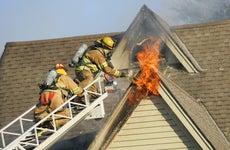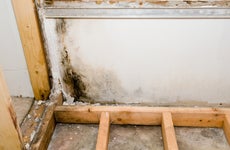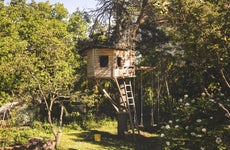Does homeowners insurance cover termites?
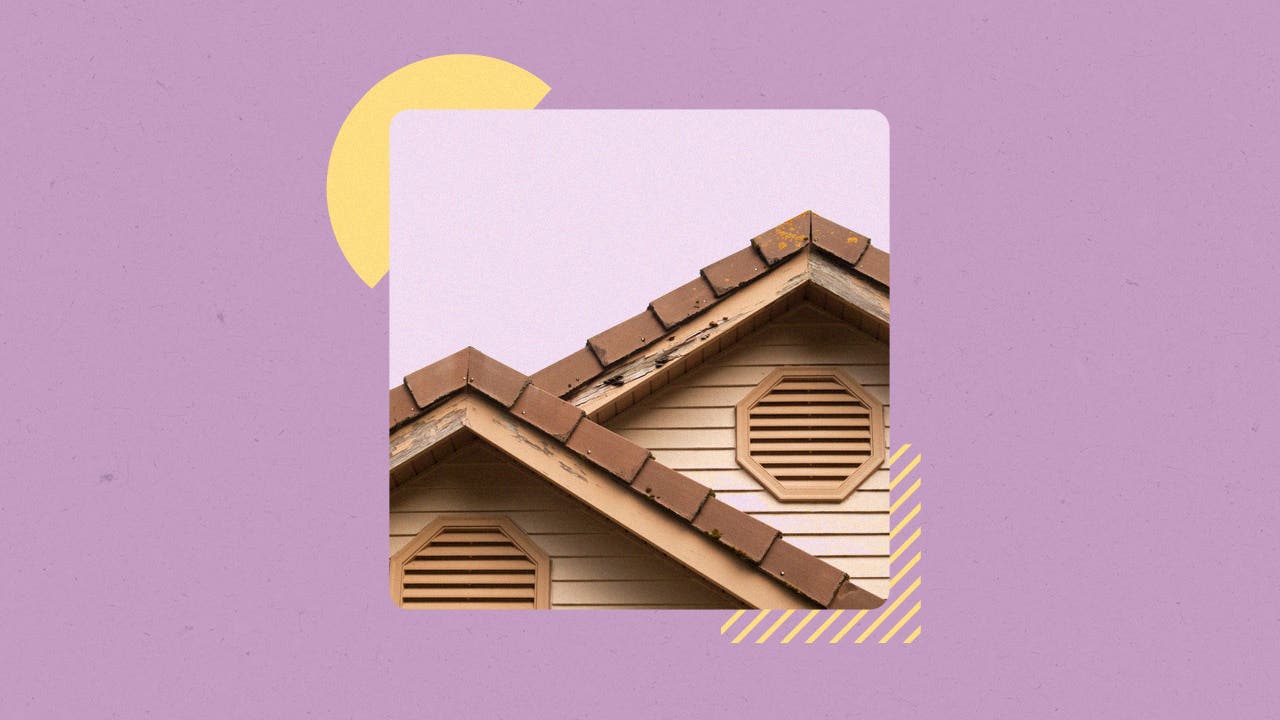
The Bankrate promise
At Bankrate, we strive to help you make smarter financial decisions. To help readers understand how insurance affects their finances, we have licensed insurance professionals on staff who have spent a combined 47 years in the auto, home and life insurance industries. While we adhere to strict , this post may contain references to products from our partners. Here's an explanation of . Our content is backed by Coverage.com, LLC, a licensed entity (NPN: 19966249). For more information, please see our .
Our writers and editors used an in-house natural language generation platform to assist with portions of this article, allowing them to focus on adding information that is uniquely helpful. The article was reviewed, fact-checked and edited by our editorial staff prior to publication.
Key takeaways
- Homeowners insurance typically does not cover termite damage, but there are some rare exceptions.
- Homeowners are expected to take proactive measures to prevent termite infestations, and neglect is not covered by insurance.
- Termite bonds and warranties offer additional protection against termite damage, but they vary in coverage and limitations.
- Early detection and prevention are crucial in avoiding significant termite damage to a home.
Even though they’re tiny, termites can cause some outsized damage. Each year, Americans spend an estimated $5 billion on termite control and damage. So does home insurance cover termite damage? Unfortunately, not in most cases — but there might be some notable exceptions. Bankrate’s insurance editorial team, which includes licensed insurance agents, is here to explain the particulars of termites and insurance and to offer some tips on how to keep them at bay.
Does homeowners insurance cover termite damage?
Termite damage is typically not covered by homeowners insurance. Bug, pest and rodent problems are usually considered preventable by your home insurance provider, and homeowners are generally expected to take proactive measures to avoid infestations. Some policies may explicitly mention that insect damage is not covered, while others may not mention insects at all. If insect damage is not mentioned in your policy, then it’s very unlikely that any kind of termite-related claim will be covered by your homeowners policy. You may want to read your home insurance policy to see if termites or insect damage are mentioned.
Home insurance companies will most likely not cover termite damage that results from neglect. If the homeowner failed to address potential entry points, the infestation would not usually be covered by insurance. Additionally, home insurance will not typically cover termite damage that occurs slowly over time.
Personal property that is damaged by termites is not covered by homeowners insurance either. If your insurance does end up covering the termite damage, it will likely only cover damage to the physical structure of the home and attached structures, depending on the policy’s terms.
When termite damage is covered by homeowners insurance
It is extremely uncommon that your home insurance will cover termite damage. There are generally only two situations when homeowners insurance might help cover the cost , including:
- When the termite infestation causes a covered peril: If your home is infested with termites and those termites chew through some wiring that sparks a fire, your home insurance may help cover some of the fire-related damage. Coverage will likely depend on what the insurance adjuster determines is the proximate cause of the loss.
- When the house collapses due to termite damage: If a homeowner is unaware of a termite infestation and the termite damage causes the home to collapse completely, home insurance may pay for the rebuilding. However, if the homeowner was aware of the presence of termites, the carrier will very likely deny the claim.
What to do when you have termite damage not covered by insurance
Unfortunately, most companies do not sell termite insurance policies. If the home has termite damage that is not covered by homeowners insurance, an exterminator will need to assess the situation, give you a cost estimate and recommend the best way to solve the problem.
Before choosing an exterminator, you may want to have several professionals visit and provide a quote. The service cost will very likely be out of pocket, so look for a company that offers fair prices and has good customer reviews. Ask how long the extermination process will take and when a contractor can survey the interior damage.
Once the termites themselves have been taken care of, the next step is to have a contractor evaluate the damage to the home. You may consider getting several opinions about the repairs that need to be made and what they will cost. A licensed contractor should be able to address a termite infestation and recommend repairs.
How to repair termite damage
While homeowners insurance does not typically cover termite damage, you may be able to take steps to repair termite damage that has occurred to your home. As you find damaged wood, you generally have a couple of options to fix it. You can replace the entire piece of wood if it’s non-structural and prone to minimal stress. You may also have a less expensive option with products such as steel frames, which can be drilled into place and bolted to undamaged wood. This provides more structural support than the damaged wood alone could provide and generally costs less than replacing an entire piece of wood.
Repairs that require replacing structural supports are more complicated, and many homeowners may choose to hire an experienced contractor to complete these repairs. If that’s the case, you might benefit from getting estimates from several local contractors before choosing one to make repairs. In some cases, the estimates from the contractors can vary greatly, and shopping around for the best and most affordable option may help you save money on repairs.
It’s also important to remember to treat any damaged wood for termites before you start repairs.
Otherwise, you may still end up with termite issues after the repairs are complete. If your termite damage is confined to a small area, there are over-the-counter spray options available, or if there are more widespread issues, you can hire a professional to fumigate your home. Either option, along with adding or replacing damaged wood, should help to prevent further termite damage to your home.
What are termite bonds and warranties?
While traditional homeowners insurance typically does not cover termite damage, there are other options to consider, such as termite bonds and warranties. These contracts with pest control companies can help provide additional security and peace of mind against termite damage.
A termite bond is a type of agreement you can buy that guarantees termite prevention measures, typically provided by a home builder, individual or organization that handles termite control. It’s designed to help cover the cost of termite management and any damage repair. Termite bonds are more popular in areas where termite infestations are common. In fact, before you can finalize the purchase of a house, lenders often require them. The cost can fluctuate, though, based on who’s providing the bond, where you are and how long the coverage lasts.
On the other hand, a termite warranty is essentially a contract that homeowners can secure for protection against termite damage. Since most general home insurance policies don’t cover such damage, a termite warranty acts as a safety net, providing coverage for potential damage and includes ongoing surveillance or maintenance throughout its term. This warranty ensures that the pest control company is obligated to treat your home for termites if found during an annual check-up within the warranty period. The warranty may also set out whether the company will repair termite damage or just treat the problem again. Notably, some termite warranties can be passed from one homeowner to another, while others cannot.
How to detect termite damage
Early detection of termite activity is crucial in preventing significant damage. Your home may begin to give off loamy or mildew-like smells, for example. Though termites are difficult to actually see with the naked eye, there are signs to look for that can help you determine the type of termites you have, whether drywood, dampwood or subterranean termites. These include:
- Soft wood: Because dampwood termites like moist spaces, they tend to seal up their nests in order to preserve humidity. It is important to look at potential damp habitats around foundations, such as near leaking gutters or around overgrown bushes.
- Blistered wood, bulging floors, ceilings or walls: If termites begin to imbed into your home’s wood, you may notice these signs of their presence. Termite damage to wood, floors, ceilings or walls may closely resemble water damage.
- Mud tubes: Look for tunnel-like pathways on foundations and crawl-space walls. Mud tunnels are usually a telltale sign of subterranean termites.
- Swarms: Seeing winged termites or wing sheddings indoors is a clear sign of infestation. Spotting winged termites or wing sheddings (especially near doors and windows) may indicate that a termite problem has been festering for several years.
- Droppings and holes: If you notice pinholes in walls with debris piles nearby, it could mean that you have a drywood termite problem.
How to prevent termites
Termite infestations are often preventable, which means that prevention is typically the best cure for termites. Termites can enter homes through foundation cracks, crevices, loose pipes and gutters. They are attracted to humid and moist environments and are usually more active in the spring and summer months.
There are several ways to take precautions that would safeguard the structure of your home and protect your belongings from termite damage. While you cannot always stop termites from attacking your property, you can take steps to try and prevent serious damage across your home, including:
- Eliminate termite food sources. Termites eat cellulose, which can be found in firewood, plants, mulch and other woody materials. If possible, keep those things away from the sides of your home where termites can easily get in.
- Seal entry points to keep termites out. Check the home’s foundation for small cracks and holes. Seal gaps around any water and gas lines that run outside the home. Look for leaky pipes or gutters that can cause water to pool around the foundation.
- Schedule annual termite inspections. This is an important step for all homeowners. An annual inspection can catch an infestation early and prevent further damage. Consider having a professional exterminator check the home for termites once per year and following their guidance on keeping termites away from the house.
If you have termites in your home, there are ways to treat the infestation. Certain pesticides are effective against termites, but because these bugs can cause damage relatively quickly, your best bet may be contacting a professional exterminator.
Frequently asked questions
-
-
Every homeowner has specific needs when it comes to insurance. Some homeowners primarily aim for low homeowners insurance costs, while others look for good customer service. The best home insurance company is different for everyone, but several companies stand out. Based on our research, Lemonade, Allstate and Auto-Owners offer some great homeowners insurance options.
-
Unlike a rodent or ant infestation, it can be difficult to detect termites, which live in the walls, support beams, floors, ceilings, cabinets, furniture and carpet. Some of the things that may indicate termite damage include soft or hollow wood, bubbling paint, splintered wood or mud tubes. You may also find termite pellet droppings.
-
The cost of termite extermination depends on a few factors, including the number of termites and the termite colony’s size. Small infestations are usually less expensive to treat, and widespread infestations can be more expensive. Before hiring an exterminator, request price quotes from a few companies to help ensure the best rate.
-
If the termite infestation triggers a covered peril, like a fire, then it is possible your home insurance might cover the fire-related damage. Or, if the homeowner was unaware of the infestation and the termite damage caused a total home collapse, home insurance might help pay for the rebuild. But, if you spot termites in your home and want to file a claim, it is highly unlikely that you will get home insurance to cover the termite damage.
-
Related Articles
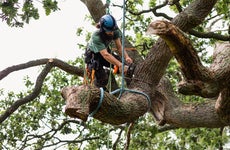
Will my homeowners insurance policy cover tree removal?
